How to Save Water: 11 Easy Changes to Make

We all have incentive to put our planet first—especially when it comes to essential resources such as clean water. However, it can be all too easy to take the taps, faucets, showers, and toilets in our homes for granted: The average family is estimated to waste 180 gallons of water per week—or 9,400 gallons of water annually, according to the U.S. Environmental Protection Agency (EPA). And even in the short term, it can wind up costing you dearly on your water bill not to pay attention to your consumption. Fortunately, there are plenty of options for anyone who wants to learn how to save water—and money Read on for the easy, eco-friendly, and budget-conscious changes you can make, according to environmental experts.
RELATED: 10 States With the Cleanest Tap Water, New Data Shows.
1
Change up your lawn maintenance routine.

Keeping your yard looking its best involves a lot of work throughout the season, from planting to fertilizing and everything in between. However, experts say daily maintenance is one of the worst culprits for water use in the U.S.
“Did you know that one-third of the water Americans use is to water our lawns and gardens? That’s nearly nine billion gallons of water per day,” says Kate Colarulli, head of strategic insights at CleanChoice Energy.
If you’re looking to get the most out of the hose or sprinkler and reduce consumption, consider changing up the time of day you’re using it. “Watering earlier in the morning works best so that more water is absorbed and less water evaporates in the heat,” she says. “As well, consider installing a smart sprinkler system that adjusts based on weather and soil saturation to help save you water and money.”
There’s also a way to turn downpours into a renewable resource. “A rain barrel can collect runoff water from your roof that you can use in your garden—helping you save water and money!” she suggests.
If you’re worried about your vegetables and flowers getting the water they need, you might want to consider an entirely new irrigation strategy. “Installing a drip system is much more economical than using sprinklers,” says Marek Bowers, founder of Bolder Green. “The savings in water in gallons per hour are about 10 times with much more targeted watering. I made the change, and it even reduced my energy bill by 25 percent.”
2
Rethink your planting choices.
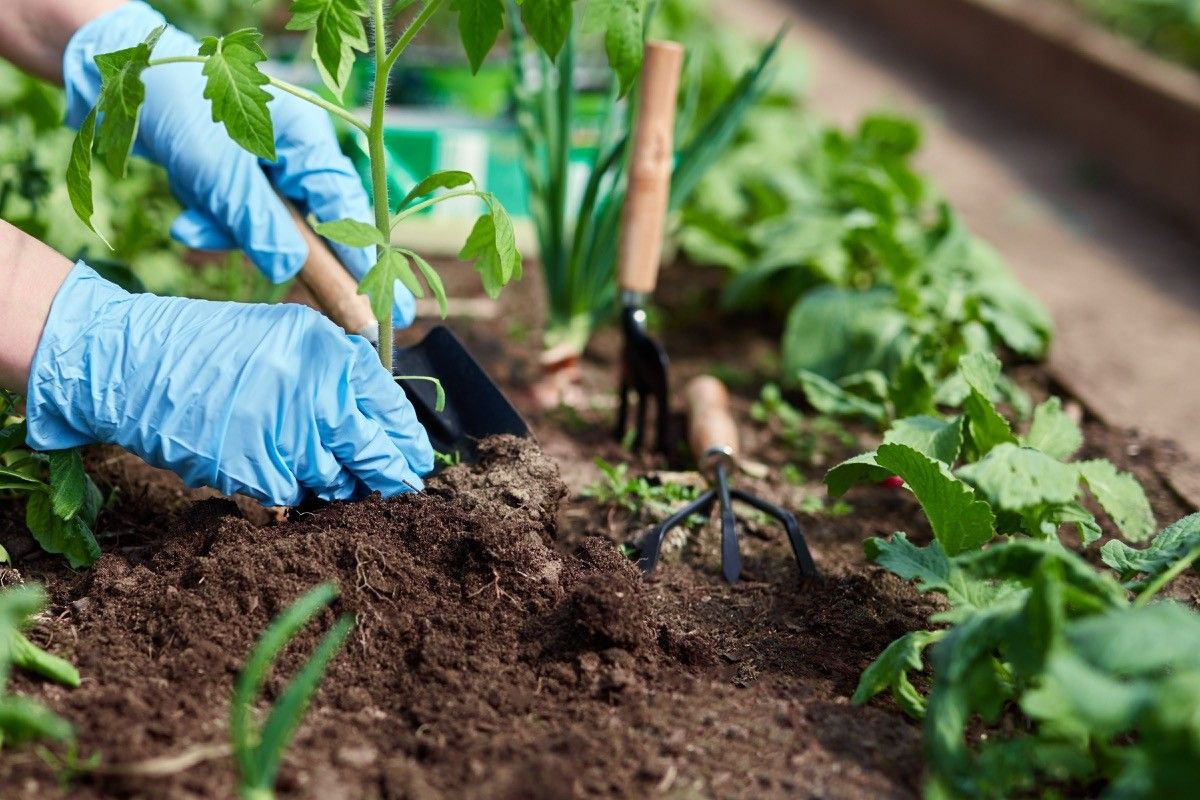
Setting yourself up for gardening success doesn’t only include becoming more efficient with your irrigation tactics. The biggest help can actually be choosing the right plants to ensure they won’t struggle to survive in your local environment.
“Do some research to make sure everything you plant is native to your region,” says Bowers. “Native grasses and plants require less water and fewer nutrients and fertilizers to keep them flourishing.”
And it won’t just help cut down on water: He adds that native plants also provide vital habitat for wildlife and pollinators, promoting a healthy ecosystem in your area.
RELATED: 7 All-Natural Ways to Keep Your Garden Pest-Free, According to Experts.
3
Overhaul your laundry strategy.
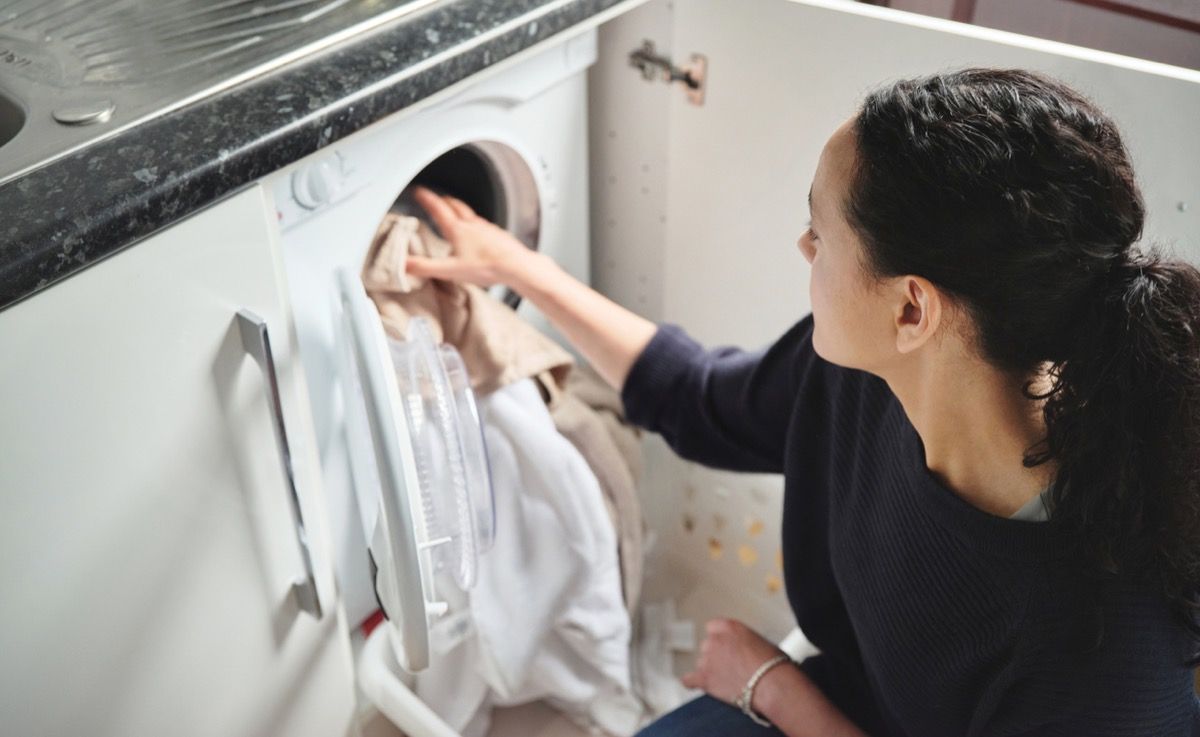
Laundry is one of those chores that feels like it runs away from you if you’re not constantly staying on top of it. But if you’re prioritizing using less water, it can pay to change up your cleaning routine.
“It’s tempting to wash little loads of laundry, but it’s much more water-efficient to only run the washing machine when it’s full. So, wait until you have a full load of clothes to turn on that washing machine,” says Ali Azimi, co-founder of Drip by Drip, an organization that deals with water problems in the fashion and textile industry.
He also warns against using fabric softeners during the wash cycle. “These products can make towels less absorbent. They can also build up gunk in your washer, which makes the washer less efficient.”
Azimi suggests vinegar, which softens clothing without the chemicals, as an alternative.
4
Consider your wardrobe and clothing purchases.

It’s no secret that fast fashion has come under fire for being unsustainable and environmentally damaging. That’s why making smarter choices on what you add to your wardrobe can have such a big effect in the long run.
“Purchase clothes made from organic cotton or other environmentally friendly fibers,” says Amizi. “Regular cotton is an intensely water-hungry fiber to produce.” He explains that clothing made with organic cotton, linen, or hemp will help to reduce the amount of water that has gone into making them—especially if they come from water-conscious fashion companies.
He also suggests looking into buying clothing that uses water-efficient dying methods.
“Clothing dyeing is also a water-intensive process. Look for clothing that has been produced using waterless dying or low-liquid ratio dyeing to reduce your contribution to water use in the textile industry,” he suggests.
5
…Or cut back your closet overall.

While some methods may be more sustainable than others, the most eco-conscious way to approach fashion can be to buy fewer pieces of clothing overall.
“When you purchase lots of ‘fast fashion’ pieces of clothing, you are contributing to the water-over-consumption by the textile industry,” says Azimi. “Purchase fewer numbers of higher-quality clothing instead.”
Worried about staying within your budget while still looking your best? Azimi suggests a novel and sustainable approach to wear-it-once fashion.
“There are lots of rental services for clothing these days!” he says. “You can find them for specific pieces of clothing, such as party ware or office-appropriate clothing.”
He adds that many of these companies include washing as part of their service, which should give you the peace of mind that the clothing is being washed in an industrial—and likely more water-saving—way.
6
Switch to water-efficient faucets and shower heads.
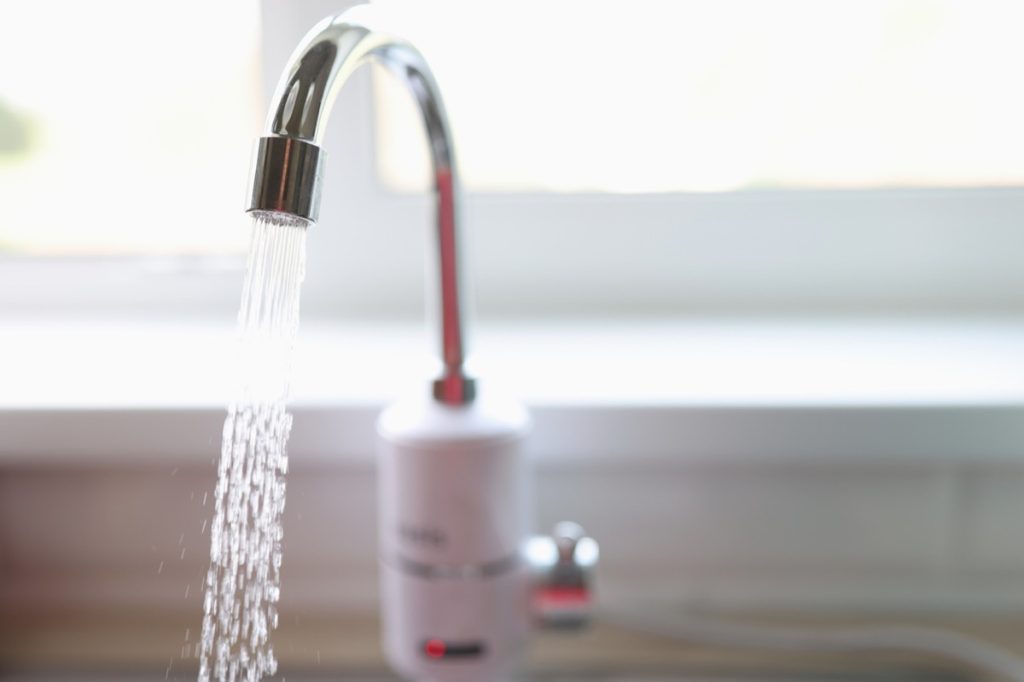
One of the most effective solutions for cutting back on water waste is going right to the source. In this case, this means updating your hardware around the house to make everything more efficient.
“On faucets, aerators are simple to replace, and they mix the water with air, thus reducing the amount of water coming out of the spigot,” says Nancy Landrum, PhD, professor of sustainability management at Munich Business School and Les Roches Global Hospitality Education. “You can buy aerators in different levels of water efficiency—which is based on the flow rate of gallons of water per minute—depending upon how much water you want to save.”
Shower heads can also be updated for some significant results. “For example, a 1.5 gallons-per-minute (gpm) aerator or shower head will use triple the water of a 0.5 gpm aerator or shower head,” she points out.
7
Update your home’s toilets.
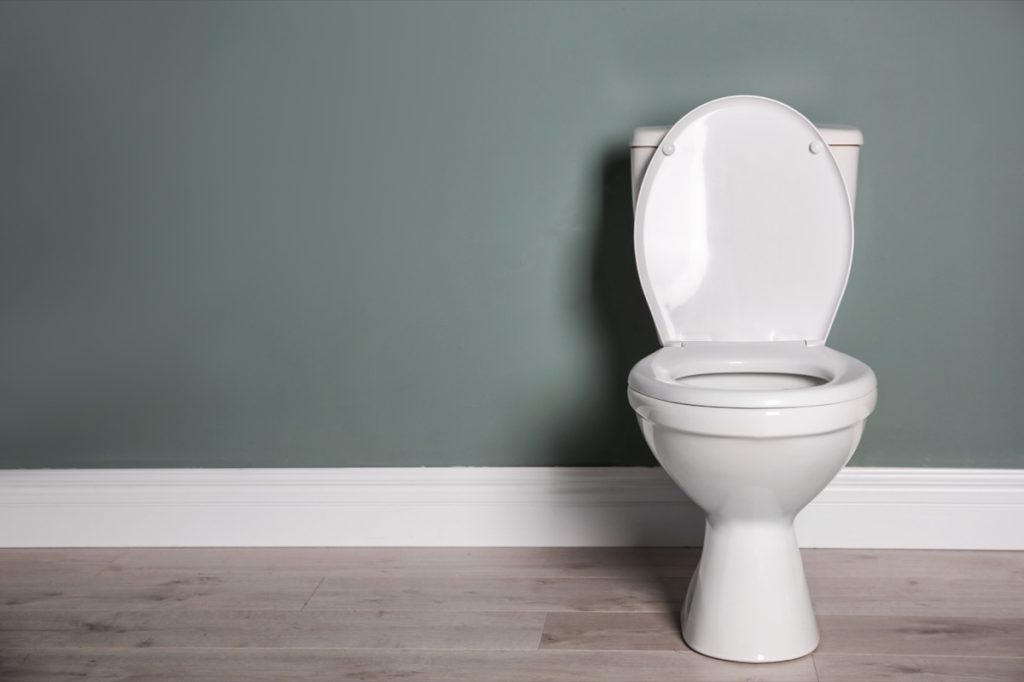
If you’re really into overhauling for the sake of saving water, updating your home’s toilets can also go a long way in reducing consumption. They can even be tailored to your needs: Landrum explains that there are different levels of water efficiency—or the flow rate of gallons per flush—to choose from depending on how much water you want to save.
“Low-flow toilets use approximately 1.6 gallons of water per flush (gpf), ultra low-flow toilets use approximately 1.28 gpf, dual flush toilets use approximately 0.8 gpf for liquids and 1.6 gpf for solids, and waterless (composting) toilets use no water at all!” she says. “By comparison, older toilets generally use 3.5 to 7 gpf. If you’re curious, you can often find the water efficiency of your toilet stamped inside the tank or bowl.”
If you’re unsure which items will actually have an impact, it can be best to ask for help or keep your eyes peeled while shopping.
“Look for the WaterSense label on products which denotes a product that is at least 20 percent more water efficient than a non-WaterSense certified product,” she suggests.
RELATED: 10 Mistakes You’re Making That Keep Your House Cold, Experts Say.
8
Try meat-free meals throughout the week.

It might seem obvious that switching out household appliances can help you reduce water consumption. But in the long term, even less obvious factors, such as your dietary decisions, can have a profound effect.
“Did you know that one pound of beef can take up to 4,000 gallons of water to produce? In comparison, one pound of vegetables only requires 39 gallons of water,” says Colarulli.
Is vegetarianism not a fit for your physical needs or lifestyle? You can still enjoy some of its benefits by planning one or two meat-free meals each week, she says.
9
Use your dishwasher.
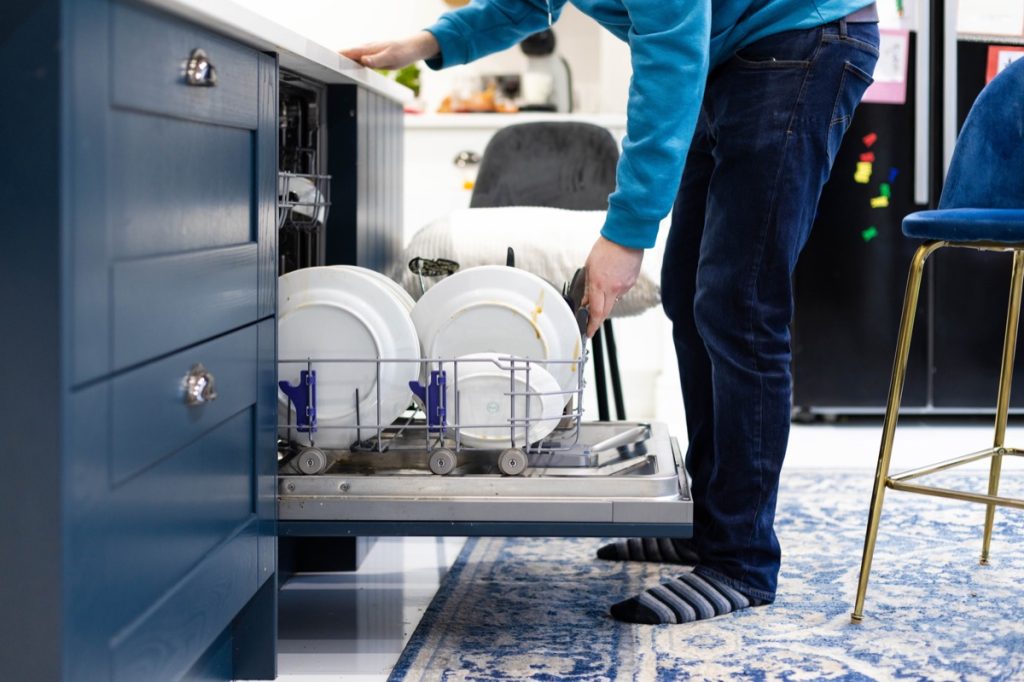
Cleaning up after a meal can be a significant source of waste. Colarulli says that’s where a dishwasher is not only convenient but also efficient.
“Washing dishes by dishwasher saves nearly 9,200 liters per year compared to hand washing,” she tells Best Life. “As well, using energy-efficient appliances can also save energy in the long run.”
Just make sure you’re timing your usage right to get the most mileage. “It uses the same amount of water to wash a full dishwasher load, so be sure that you only wash the dishwasher when it’s truly full—and not every night just out of habit!” says Azimi.
Even if you don’t have a dedicated appliance, you can still start a beneficial habit. Colarulli suggests plugging the sink and using it as a water basin when handwashing, as this will drastically reduce the amount of water used.
10
Remember to turn off the water flow in the moment.

Even if you use efficient shower heads and faucets, the amount of water wasted during everyday activities can really add up. That’s why it’s always best to shut off the water whenever you’re not using it.
“It takes a surprising amount of energy to pump, heat, treat, and move water,” says Colarulli. “Simple steps such as turning the faucet off when brushing your teeth or taking shorter showers can add up and save a lot of water.”
11
Find a monitoring app.

Ultimately, how much water you save can come down to knowing how much you’re using. That’s where technology can come in handy.
“See if your water provider has a customer app (such as Dropcountr) that lets you compare your actual water usage with the average water usage of your neighborhood,” says Landrum. “Awareness of water usage often results in the adoption of more water-efficient behaviors.”
- Source: EPA: Statistics and Facts